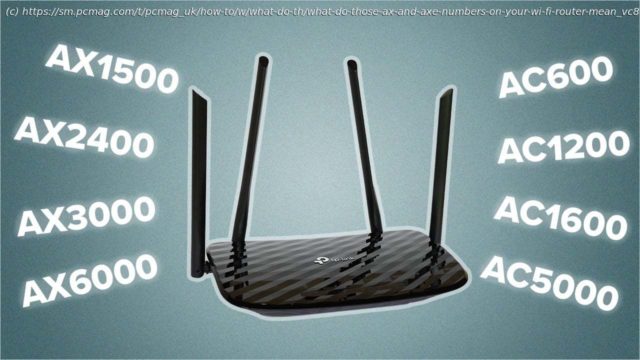AX1400? AXE6000? Wi-Fi router speeds like these sum up all the bands a router supports, though the real-world performance will vary. Here’s a guide to understanding those cryptic figures router manufacturers use.
If you’ve been considering upgrading your home wireless network, you might feel overwhelmed by the choice of routers and the type of networking technology that best suits your needs or budget. We get it. It can be complicated. Wi-Fi names can be confusing in and of themselves, and the sheer number of wireless router brands, model numbers, and differences in speeds and features can be daunting to wrap your head around.
For starters, Wi-Fi generations themselves are a confusing jumble of letters and numbers, with flavors like 802.11n, 802.11ac, 802.11ax, and so on. A simplified numbering system makes it somewhat easier to understand which version is newer (i.e. Wi-Fi 6 or Wi-Fi 5), but that leaves the confusing letters and numbers in the product names of wireless routers themselves. When it comes to product specs and model numbers, higher numbers are usually better. So is an AX2000 wireless router worth choosing over an AX1900 one? AX6600 has to be more capable than AX6000…right?
If you’re not sure, we get it. Router makers have adopted some complicated, confusing naming schemes that often differ among manufacturers and sometimes leave you, the shopper, in the dark. Yes, those numbers are about speed, but they reflect speeds that you won’t be seeing directly on your phone or PC, because they’re the sum total of all possible speeds on all channels and all frequency bands that the router supports.Dual-Band vs. Tri-Band vs. Quad-Band
Wi-Fi operates on three primary radio frequencies: 2.4GHz, 5GHz, and 6GHz. Wi-Fi networks using 2.4GHz generally have a longer signal range, while 5GHz allows for faster speeds at the expense of range. Dual-band Wi-Fi 6 routers allow wireless networking using both 2.4GHz and 5GHz bands. Tri-band Wi-Fi 6 routers still use 2.4GHz and 5GHz, but typically their 5GHz transmissions are divided into two separate channel ranges.
With a tri-band router, you might be able to use the faster upper range of the 5GHz network. However, that upper channel range might instead be reserved for mesh networking communication (known as “backhaul”), depending on the particular model.
Wi-Fi 6E routers gain an additional band to work with: 6GHz. Many of these routers are still marketed as tri-band routers, with users able to select among 2.4GHz, 5GHz, and 6GHz networks as their client devices allow. Quad-band routers now also exist, offering a 2.4GHz band, two selectable 5GHz bands, and the new 6GHz band.
In any case, that number on the router (such as AX2700 or AX3000) is, essentially, the sum of all the speeds across all bands the router can use, not the speed of any individual band or device. For instance, if the combined speed of all of a given Wi-Fi 6 router’s bands is around 3,000Mbps, you might see it advertised as AX3000 (“AX” denoting Wi-Fi 6, and “3000” for the approximate sum of the speed across all bands).






